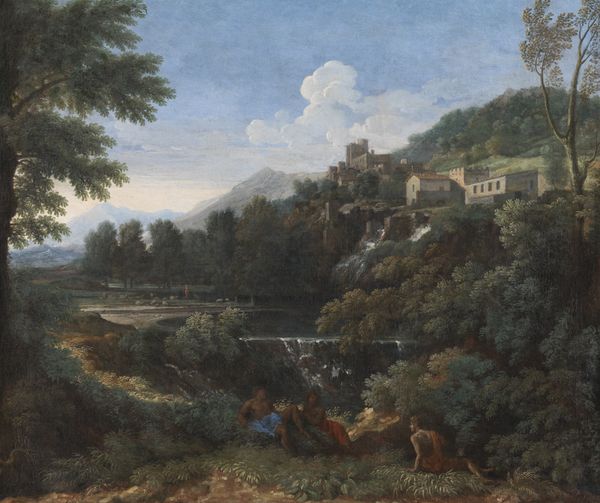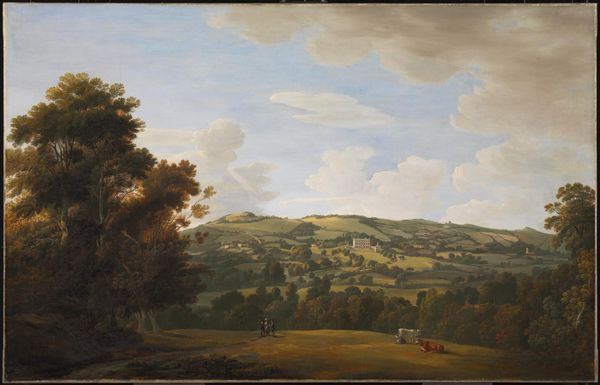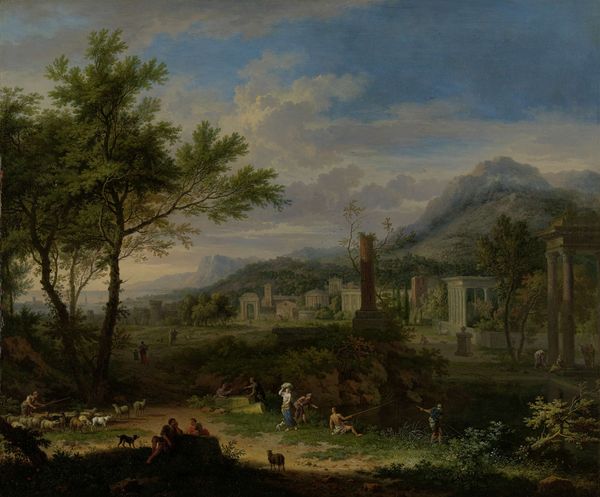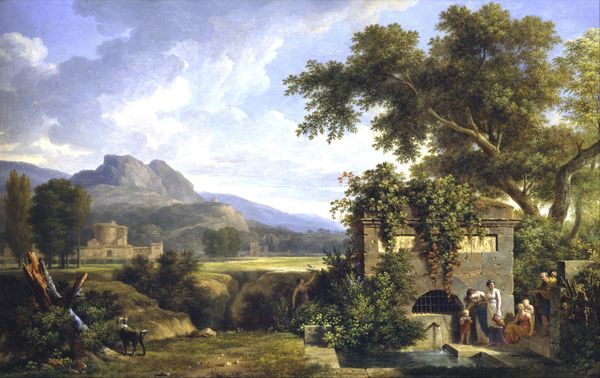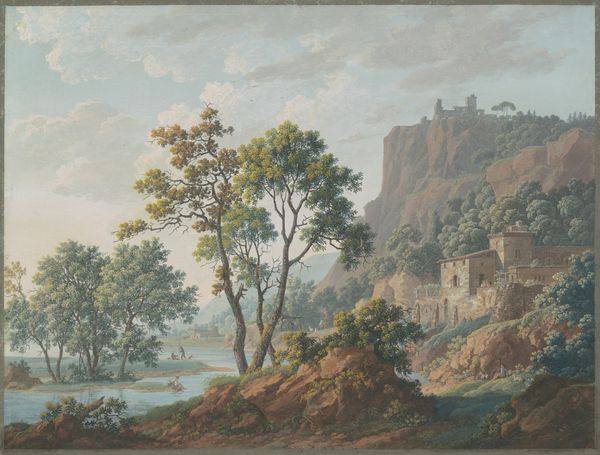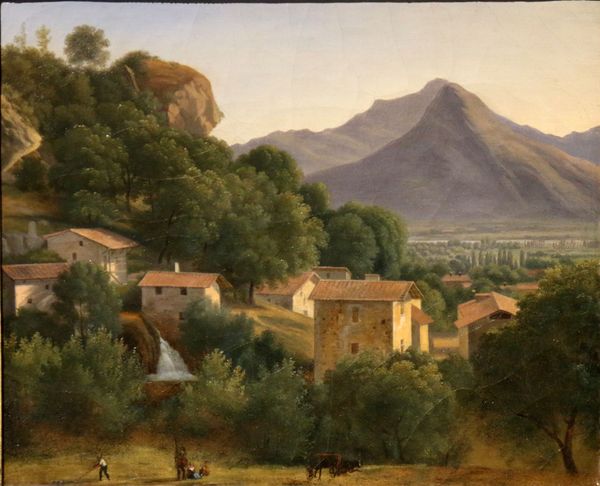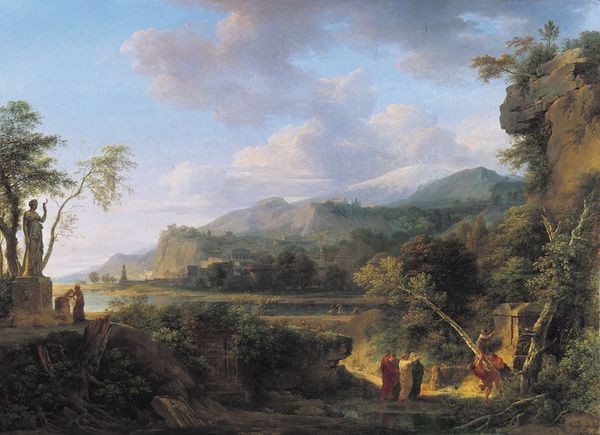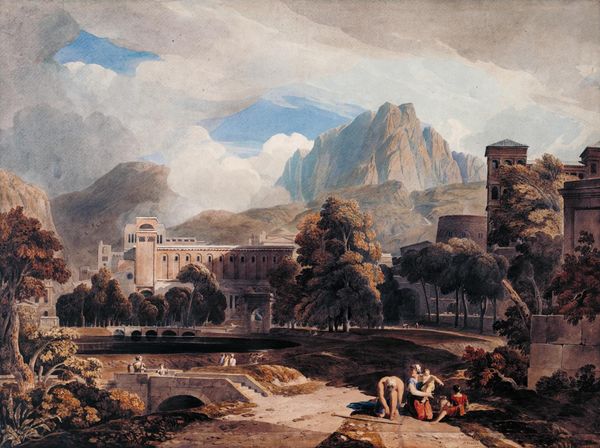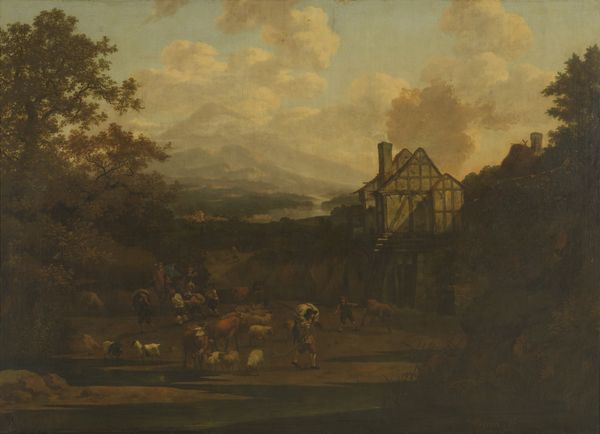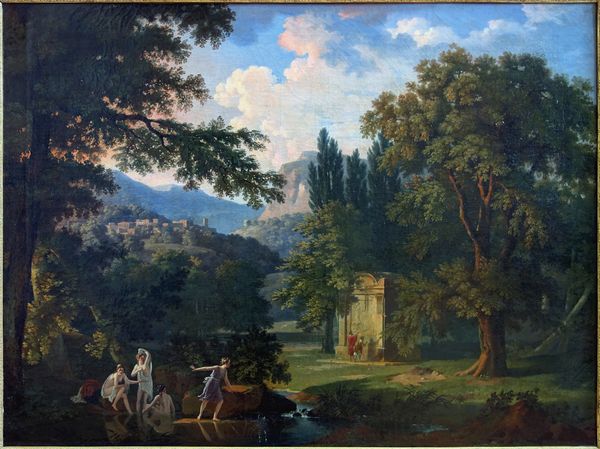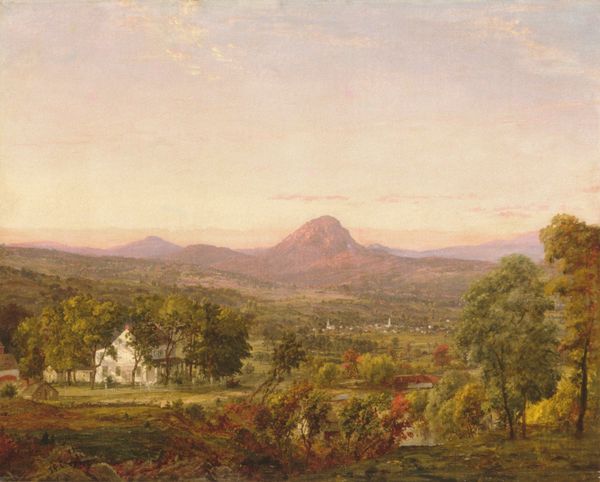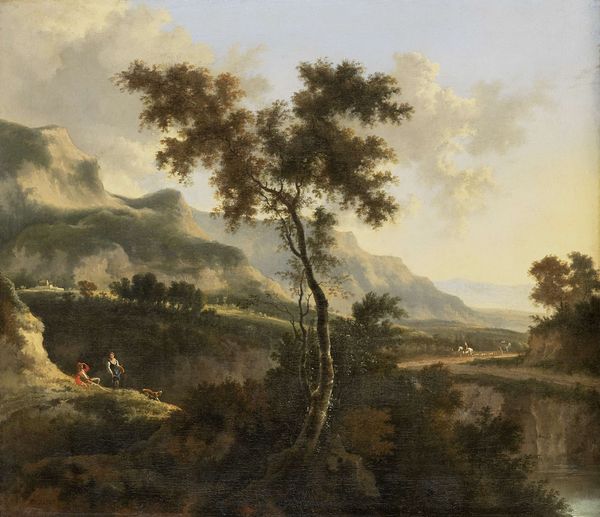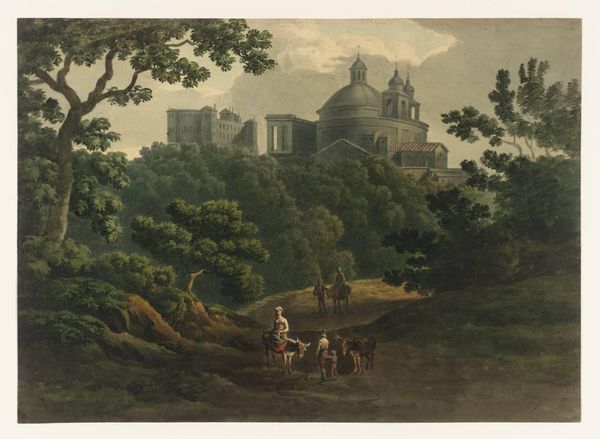
painting, oil-paint
#
neoclacissism
#
sky
#
rural-area
#
painting
#
oil-paint
#
landscape
#
oil painting
#
romanticism
#
academic-art
Copyright: Public domain
Jean-Joseph-Xavier Bidauld painted "Vue Du Couvent De Grotta Ferrata Et Ses Environs" without specifying when, capturing the Italian countryside. In this period, landscape painting wasn't just about pretty scenes; it reflected deep social and cultural values. Bidauld, as a product of the French Academy, approached nature with an eye trained to see order and harmony. But look closer – this isn't just any landscape. It's the area around a monastery. The placement of the monastery suggests the influence of the church. The scene evokes a sense of peace and order, values often associated with religious institutions. Bidauld's art implicitly comments on the social structures of his time, reinforcing traditional hierarchies. To truly understand this painting, we need to delve into the history of both landscape painting and the role of religious institutions in 18th-century Europe. We must use historical resources, from the writings of art critics to social histories, to understand the contingent meaning of art in its social and institutional context.
Comments
No comments
Be the first to comment and join the conversation on the ultimate creative platform.
